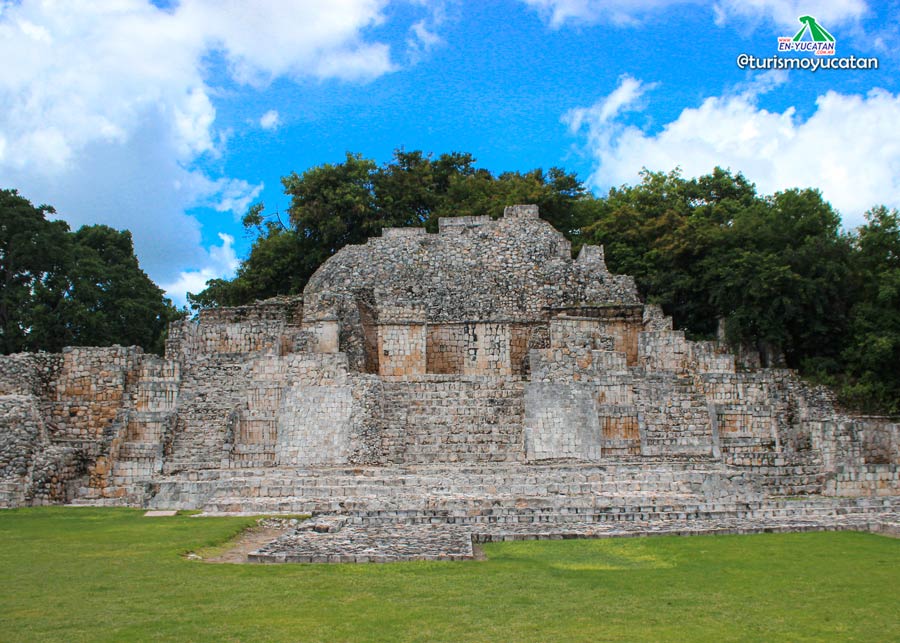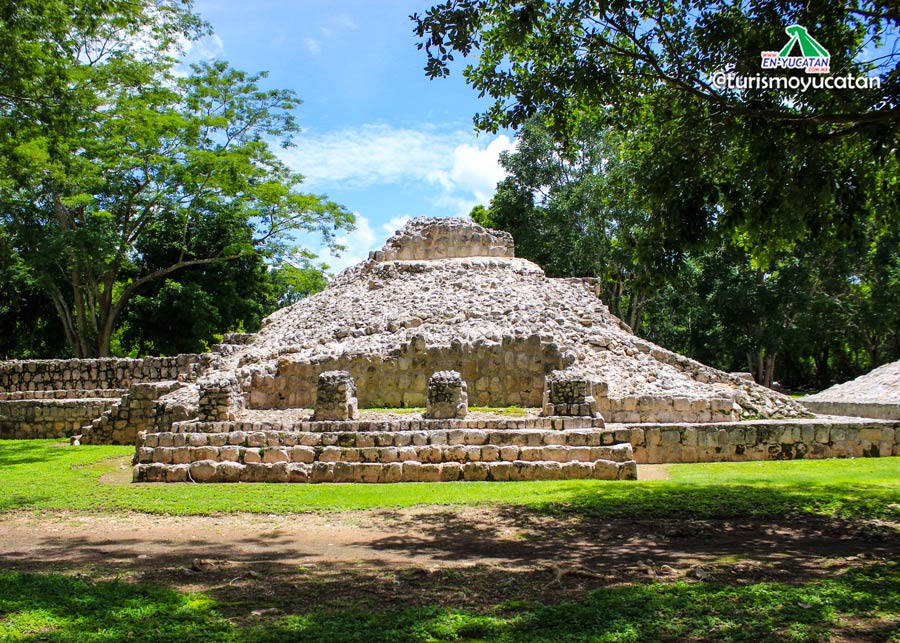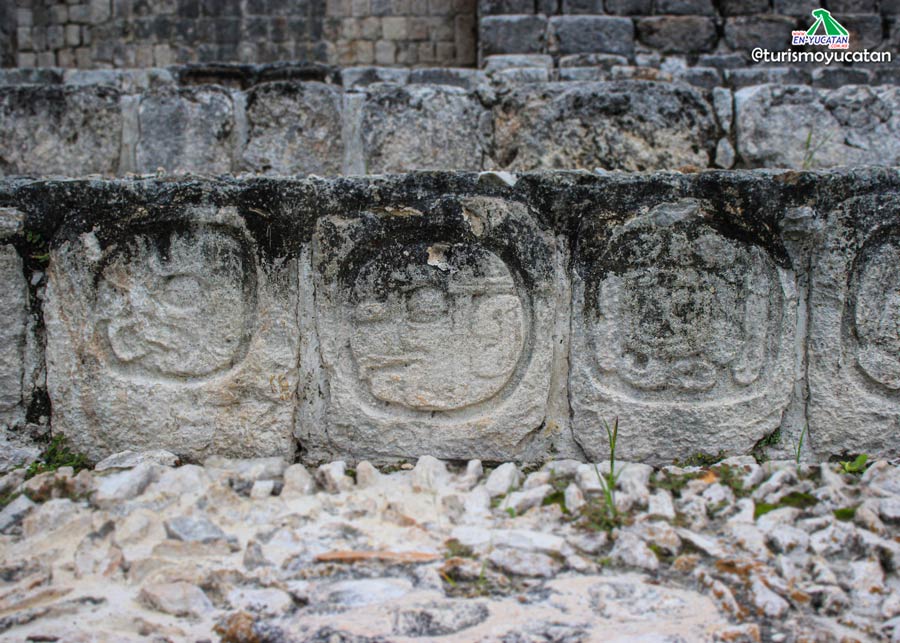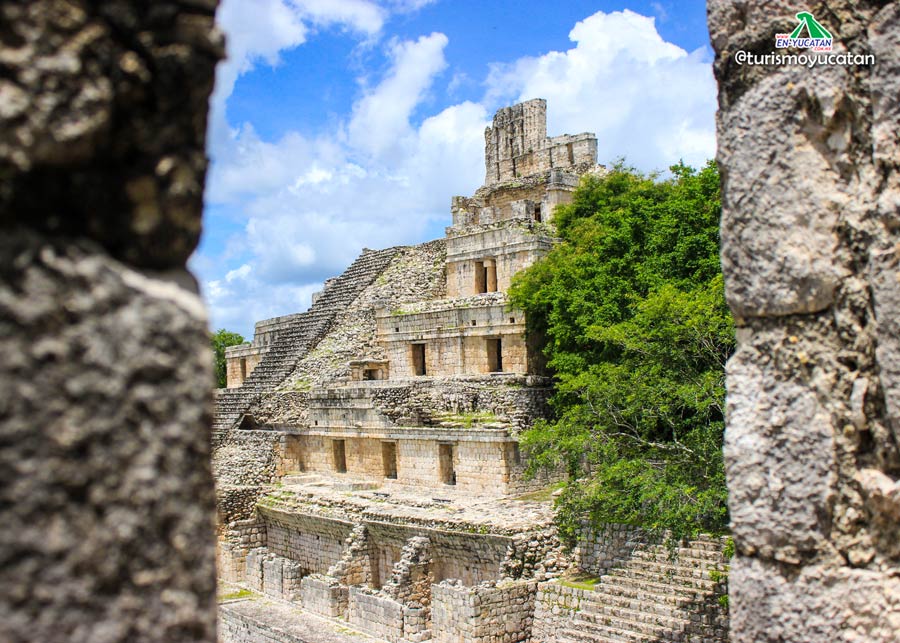Edzna means “House of the Itzaes”, Edzna Mayan Ruins are located to 61 kilometres to the south-east of Campeche’s City. The access fulfils for the federal road 180; in the km 45 a diversion takes towards the road 261 that he leads to the archaeological zone.
Edzna was possessing numerous religious, administrative buildings and habitacionales distributed in a surface of approximately 25 square kilometres. His architecture possesses influence of the style Puuc, Peten and Chenes. In that we can stand out between others:
Principal Plaza. Wide quadrangular space where one agrees the major number of monumental constructions of the site, in his sectors north and south two exist sacbés or causeways that were used for the internal traffic. The buildings include the platform of the knives and the court of the ambassadors that is delimited to the west one by 2 buildings, each one by four columns that correspond to 1000-1200 A.D.
Nohochná (The Mansion). Structure that possibly was used to exercise administrative functions, though also it could work as a species of graderío to attend events celebrated in the Principal Plaza. This structure possesses four long galleries in his top part, to which access was had by means of vain formed as thick pilasters.
Temple of the South. He understands 5 bodies with demolished moldings and reclose corners that converge, in his later part, in a broad bank, on which there gets up the temple that dates back of between 600 and 900 A.D.

Game of ball. It is composed by two parallel structures in whose top part there get up some rooms that possibly were used to place in them the images of the deities associated with the event and the own attachments of the game and his participants
Great Acropolis. It is a wide space of quadrangular plant on which several monumental structures get up, as the Building of Five Floors, formed by a pyramidal basamentos staggered of five bodies that have towards the exterior numerous rooms, and a construction in the top part that constitutes the temple in strict sense. The plant of the sanctuary has form of cross and his ceiling preserves auctions of crestería, at some time decorated with figures molded in stucco.
Temple of the north. It was consisting of a long basement of wide perron which principal axis was leading one or two you were squeaking elongated, the same that were covered later, reclose panels, some sets to be added with tamborcillos and broad banks. The sanctuary that was crowning it had at least four modifications. Opposite to this temple there locates a platform in the shape of C correspondent to the Edzná’s most late occupation: 1200-1400 A.D.

It is delimited by several constructions covered with quadrangular, rectangular and cylindrical very well carved ashlars. In the north building also they appreciate ashlars with triangles and circles in relief that big frames shape. From the construction with curved banks a sculpture comes in the shape of quadrangular frame, with Chaac’s representations and glifos, between that celestial bands are observed, the day Imix and the month Yax. Rightly at the entry of the principal court the Temazcal, name of origin locates náhuatl whose translation to the Maya yucateco is chokó without tumbilhá, that refers to a bath of steam, which access was restricted by his religious relevancy.
The old witch. It is another major Edzná structures, is located 800 m northwest of the five-story building. On its eastern side has a stairway, basement bodies have rounded corners and tucked, and the top of the structure is a small shrine.

Temple of the Large masks. Structure that relies on two representations of the solar god that they have anthropomorphous characteristics with aesthetic own attributes of the elite, such as strabismus, dental mutilation, narigueras, earflaps and big haidos zoomorfos.
Small Acropolis. It is a basement that in whose top is existed by 4 buildings that shape a central court. Some of the Edzná’s most ancient elements come from this place: a great large mask of stucco of the Preclassic Superior, three stelas of the eighth baktún and ceramics dated between 400 and 250 B.C.
